On the anniversary of the World IPv6 Launch, this article takes a look at the readiness of networks to deploy IPv6, using statistics from the RIPE NCC service region and beyond.
One year on from the World IPv6 Launch in June 2012, we wanted to see how much progress has been made towards the goal of global IPv6 deployment.
Both APNIC and Google are carrying out measurements at the end user level, which show that around 1.29% (APNIC) and 1.48% (Google) of end users are capable of accessing the IPv6 Internet. Measurements taken from this time last year show 0.49% (APNIC) and 0.72% (Google), which means the amount of IPv6-enabled end users has more than doubled in the past 12 months.
Rather than looking at the end user, the measurements the RIPE NCC conducts look at the networks themselves. To what extent are network operators engaging with IPv6? And how ready are they to deploy it on their networks?
IPv6 RIPEness
The RIPE NCC measures the IPv6 "readiness" of LIRs in our service region by awarding stars based on four indicators. Local Internet Registries (LIRs) receive stars when:
- They receive an initial allocation of IPv6 address space from the RIPE NCC
- The IPv6 address space is visible in global routing
- There is a route6 object registered in the RIPE Database
- Reverse DNS has been set up for the IPv6 address space
The pie charts below show the number of LIRs holding 0-4 RIPEness stars at the time of the World IPv6 Launch in June 2012, and the number today (You can click on the images to enlarge them).
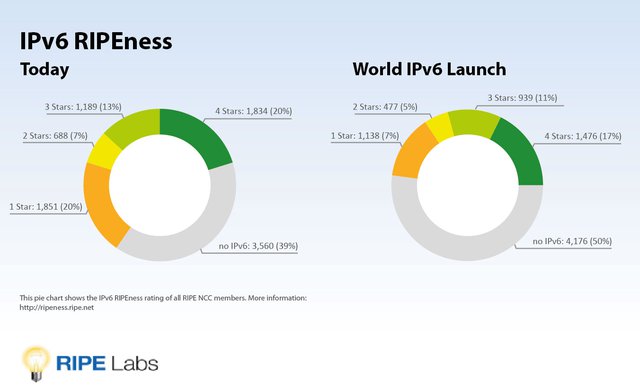
The first RIPEness star is awarded for the LIR receiving an allocation of IPv6 address space. When we look at the charts above, we see that the number of LIRs without an IPv6 allocation has decreased from 50% at the time of the World IPv6 Launch to 39% today.
One factor that shouldn’t be overlooked here is that the current IPv4 policy requires that an LIR receive an initial IPv6 allocation before it can receive its last /22 of IPv4 address space. However, this does not explain the increase in 2-4 star RIPEness, which can only come from LIRs working towards IPv6 deployment.
Five-Star IPv6 RIPEness
At the recent RIPE 66 Meeting in Dublin, we presented the results from our introduction of a fifth RIPEness star, which is still in the prototype stage. This fifth star measures actual deployment of IPv6. It looks at whether LIRs are providing content over IPv6 and the degree to which they are providing IPv6 access to end users. More information on the fifth star and the methodology behind it can be found in this RIPE Labs article . In this first version, 573 LIRs in the RIPE NCC service region qualify for the fifth star, which represents 6.24% of all LIRs in the region.
The Day We Crossed Over
Coincidentally, the World IPv6 Launch was around the same time as another
milestone for the RIPE NCC service region. It was roughly then that the number of LIRs with IPv6 allocations outnumbered those without IPv6 for the first time. This number has continued to increase, and there are currently 5,630 LIRs with IPv6 and 3,584 without.
The blue line on the graph below represents LIRs with an IPv6 allocation, while the red line indicates those with no IPv6.
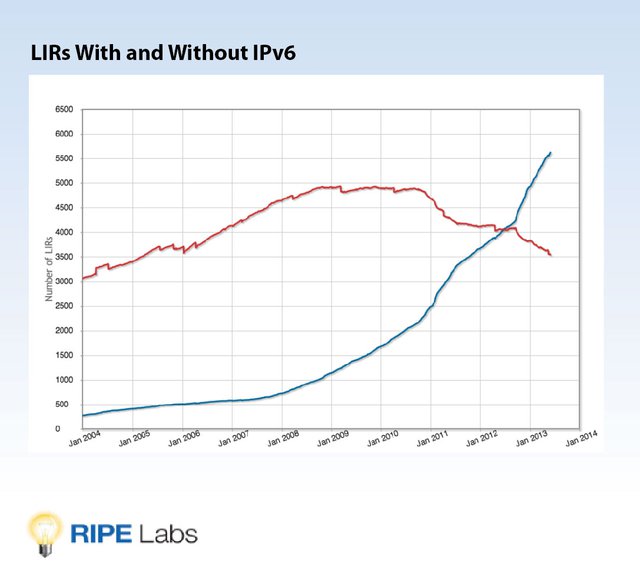
ASNs Announcing IPv6
One of the things the RIPE NCC regularly checks is the percentage of autonomous networks announcing one or more IPv6 prefixes into the global routing system. This is an important step before a network can begin exchanging IPv6 traffic with other networks.
When we take a global view, using the graph, we see that in the year since the World IPv6 Launch, the percentage of networks announcing IPv6 has increased from 13.7% to 16.1%. Of the 44,470 autonomous networks visible on the global Internet, 7,168 are currently announcing IPv6.
When we adopt a regional perspective, one of the things we would hope to see is increasing IPv6 deployment in those regions where the free pool of IPv4 has been exhausted. It is reassuring to see this confirmed – both the APNIC and the RIPE NCC service regions are leading the way with 20.0% and 18.1% (respectively) of networks announcing IPv6.
The table below compares the percentage of autonomous networks announcing IPv6, both now and at the time of the World IPv6 Launch in 2012.
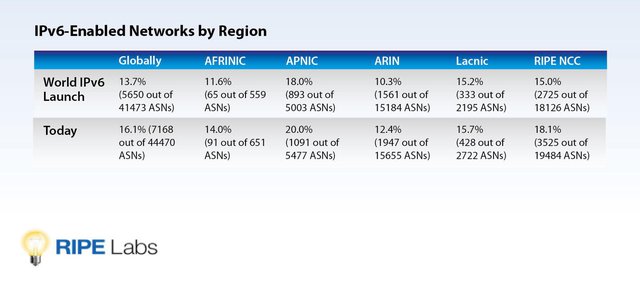
Table 1: ASNs announcing IPv6 before and after World IPv6 Launch
The RIPE NCC’s graph of IPv6-Enabled Networks (below) shows this as a comparison over time and allows for comparisons between countries and regions.
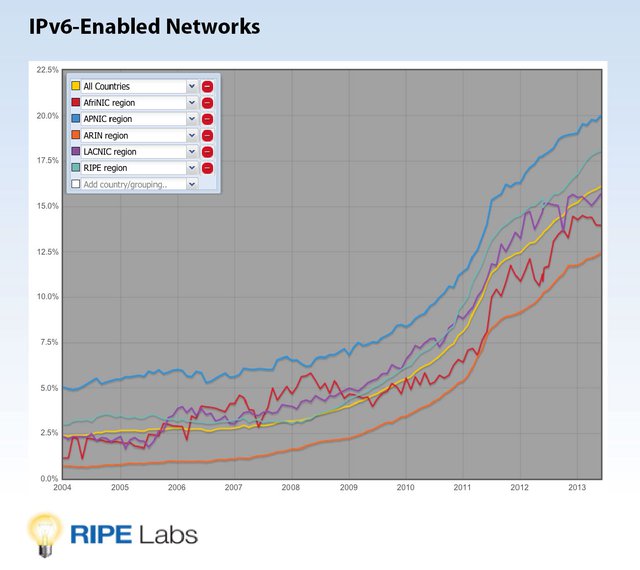
Figure 3: ASNs announcing IPv6 prefixes by region
Reassuring, But The Real Work is Still Ahead
While the above statistics provide good cause for optimism, there is still a long way to go. Now, more than ever, network operators need to learn about IPv6 and deploy it on their networks to safeguard the future growth of the Internet. To find out more about IPv6, visit IPv6ActNow .

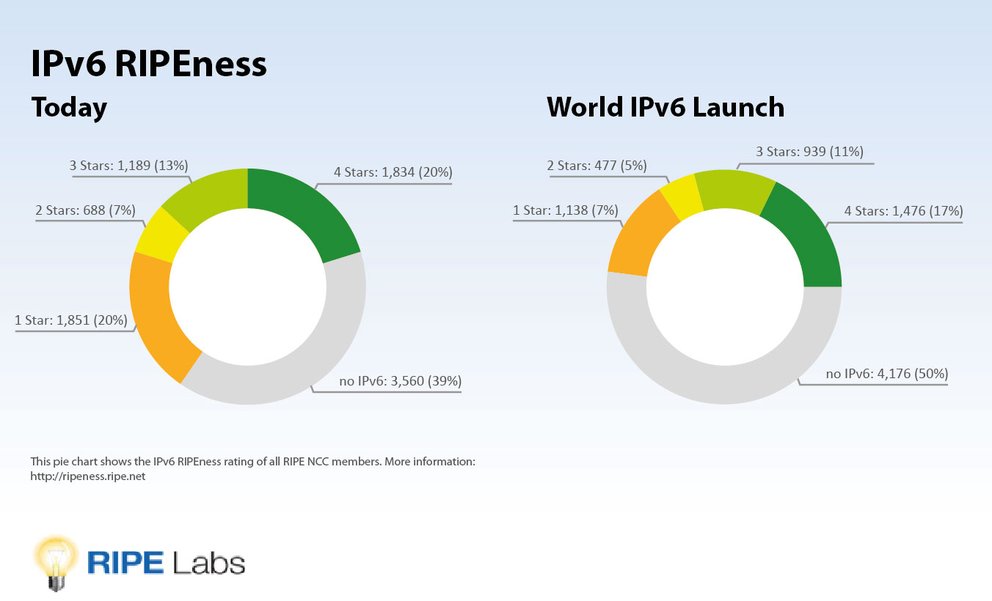


Comments 4
The comments section is closed for articles published more than a year ago. If you'd like to inform us of any issues, please contact us.
Svitlana Tkachenko •
It seems the data "frozen" on 2013-06-01 on the chart v6asns.ripe.net. Have you stopped collecting ASes that announce IPv6 prefix ?
Mirjam Kühne •
Svitlana, the data usually gets updated a few days after the first of the month. Please check again in a couple of days.
Svitlana •
Thanks, Mirjam. The chart still ends at 2013-06-01. Is it correct?
Mirjam Kühne •
Svitlana, due to a mistake the data was not yet visible on the web page. It is there now. Sorry about that delay.